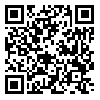Volume 29, Issue 3 (2022)
EIJH 2022, 29(3): 1-9 |
Back to browse issues page
Assistant Professor, Institute of Humanities and Cultural Studies, Tehran, Iran , elhammalekzadeh@ihcs.ac.ir
Abstract: (1419 Views)
Developments and accomplishments of the newly founded Republic of Turkey in the first half of the 20th century had long been the focus of Reza Khan, the Pahlavi ruler of Iran. He considered Atatürk and his actions to be a good model for modern life. After ascending the throne, in parallel with the implementation of Western models, he applied the dominant thinking of Turkey about people’s way of life. Emphasis on the role of women, believing that the backwardness of social organization is the reason for the humiliation of women in the society, was closely pursued by Reza Shah as an important policy and as an ideology of his governance. Among special features and components of women's issues are their presence in the social fields, clothing, health, work and financial independence, and their education, which are addressed comparatively. The main question of this article is that despite the policies of Reza Shah's government regarding women, following the example of Atatürk, what similar achievement was made? If not, what were the reasons for this? The present article tries to identify different aspects of Iran and Turkey by using archival documents, newspapers, written sources, historical researches, and descriptive-analytical methods in examining instances of modernization by imitating Turkey. The result confirms the main point that it is not correct to equate the social modernization activities of Reza Shah and Atatürk. The personality structure, the level of knowledge and awareness, and how the two came to power had a different process, and finally, the society's approach to their position in power was also different. Reza Shah's perspective with Atatürk on women's issues and the actions taken by each of them to change the position of women followed different conditions, reactions, and consequences, which in this article is highlighted using a grounded theory and a background study on issues and finally an appropriate analysis is made based on the author's perception.
Article Type: Original Research |
Subject:
Arts and Humanities (General)
Received: 2022/08/29 | Accepted: 2022/01/30 | Published: 2022/01/30
Received: 2022/08/29 | Accepted: 2022/01/30 | Published: 2022/01/30
| Rights and permissions | |
 |
This work is licensed under a Creative Commons Attribution-NonCommercial 4.0 International License. |



